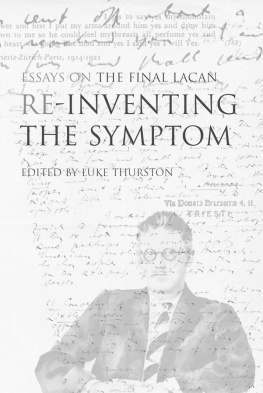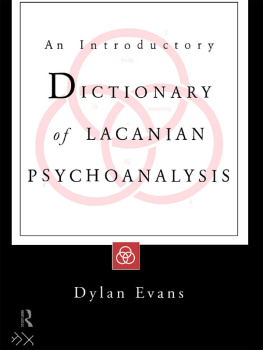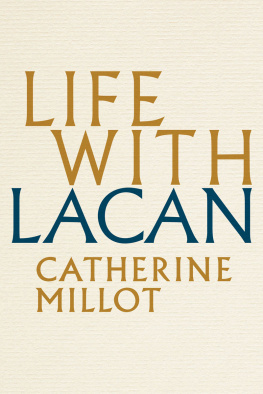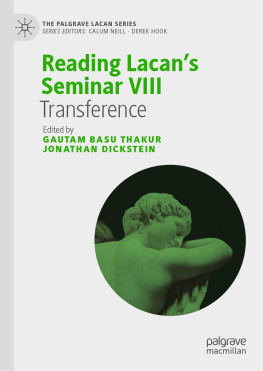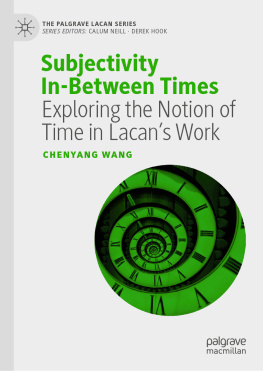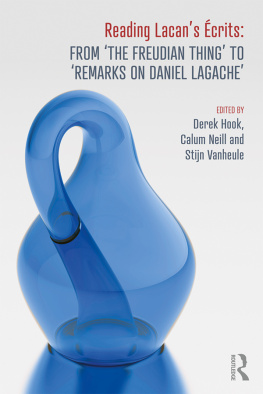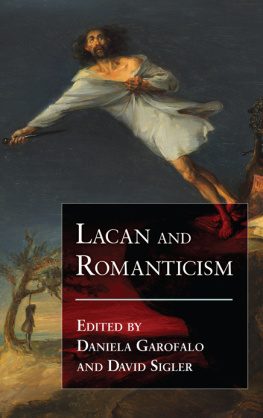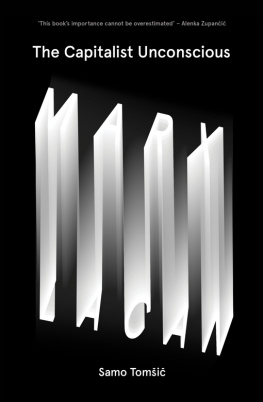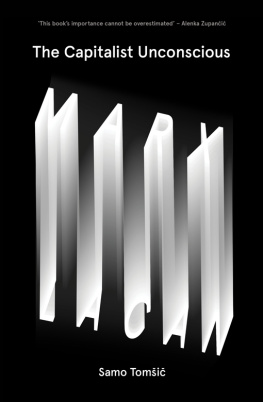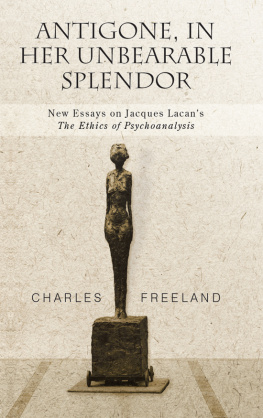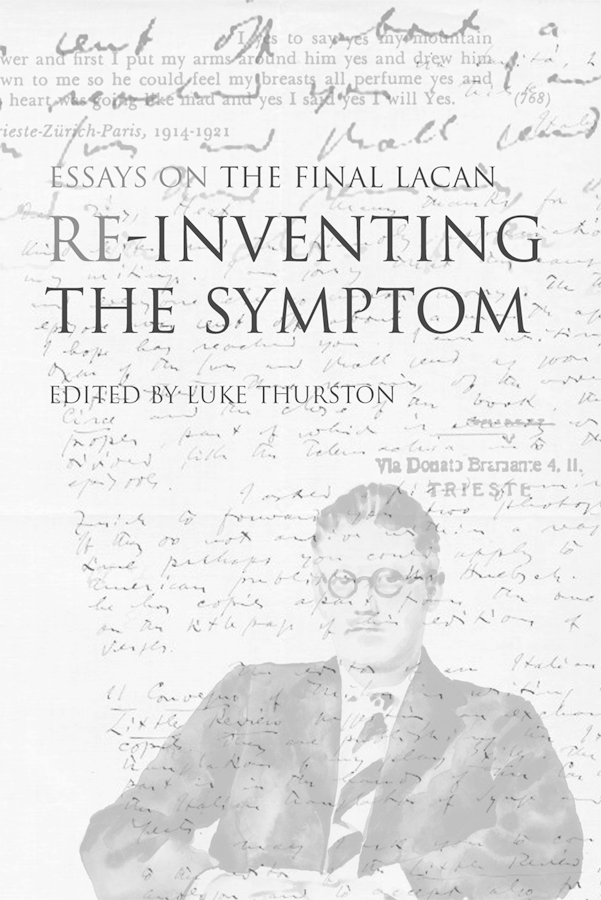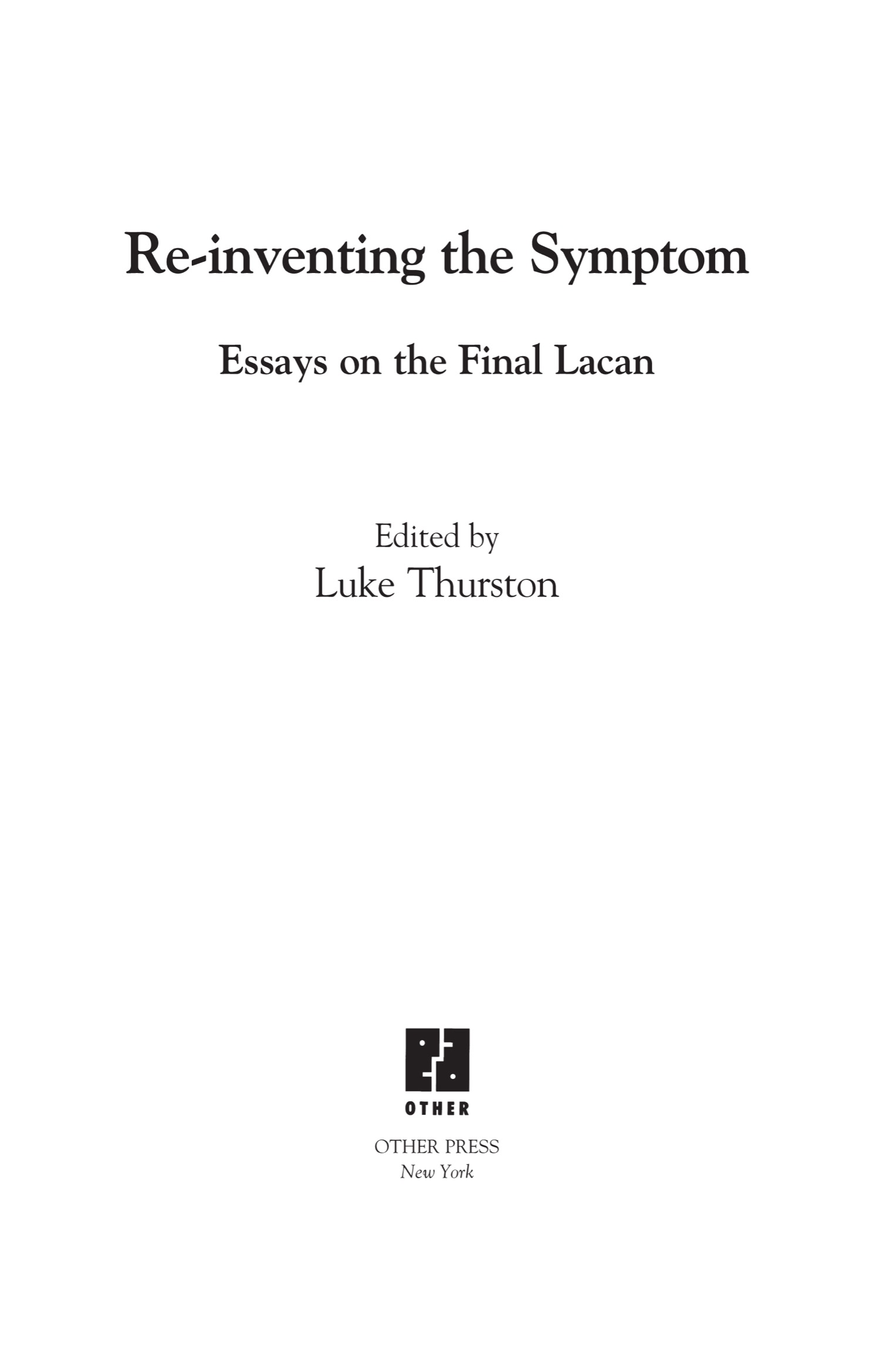Contemporary Theory Series
Series Editor: Frances Restuccia, Professor of English, Boston College
Gender in Psychoanalytic Space:
Between Clinic and Culture
Muriel Dimen and Virginia Goldner, eds.
Topologies of Trauma:
Essays on the Limit of Knowledge and Memory
Linda Belau and Petar Ramadanovic, eds.
Re-inventing the Symptom:
Essays on the Final Lacan
Luke Thurston, ed.
Art: Sublimation or Symptom
Parveen Adams, ed.
Copyright 2002 Luke Thurston
Production Editor: Robert D. Hack
All rights reserved, including the right to reproduce this book, or parts thereof, in any form, without written permission from Other Press LLC except in the case of brief quotations in reviews for inclusion in a magazine, newspaper, or broadcast. Printed in the United States of America on acid-free paper. For information write to Other Press LLC, 307 Seventh Avenue, Suite 1807, New York, NY 10001. Or visit our website: www.otherpress.com.
Ebook ISBN9781635421453
Library of Congress Cataloging-in-Publication Data
Re-inventing the symptom : essays on the final Lacan / edited by Luke Thurston.
p. cm.(Contemporary theory series; 3)
Includes bibliographical references and index.
ISBN 1-59051-013-5
1. Psychoanalysis. 2. Lacan, Jacques, 1901 I. Thurston, Luke. II. Series.
BF173 .R434 2002
150.195092dc21
2002029342
a_prh_6.0_140847925_c0_r0
riverrun
for Parveen Adams
Contents
Foreword
We are extremely pleased to have Luke Thurstons Re-inventing the Symptom in the Contemporary Theory series from Other Press. This superb collection brings the appropriate sophistication to Lacans Le Sinthome seminar, performing the balancing act of rendering Lacans obscure text visible and accessible while showing admirable sensitivity to the ultimate untranslatability of Lacans Joycean writing. A distinguished Joycean himself, Luke Thurston is in a prime position to edit a collection at such a formidable Lacanian/Joycean intersection.
We expect that this study will be regarded as necessary to maintaining a grip on what is happening in psychoanalytic theory today. Amateur Lacanians mainly acquainted with the early Lacan of the Imaginary, as well as those who have surpassed this first phase by engaging the Lacan of the Symbolic and the Real, have a great deal to gain from Thurstons collection, with its focus on the myriad implications of the sinthome as a tying together of the three rings (Imaginary, Symbolic, and Real) of the Borromean knot. Re-inventing the Symptom is not just another book in a field of study but one that expands that field.
Thurstons collection, moreover, aspires to clarify the aim of psychoanalysis, and thus to enhance the effectiveness of clincial work. Clinicians will profit as much from reading these meditations on Lacans Joycean concept of the sinthome as will theoristsor literary and art critics, for that matter. This study helps to erode the already crumbling barrier between clinical and literary interpretations of Lacans work. The untranslatable, disruptive excess that the concept of the sinthome italicizes clearly needs to be taken into account in both theory and practice.
The essays in this collection keep approaching the idea of the sinthome asymptotically from a variety of angles; the fertility of these readings of Lacans twenty-third seminar would have impressed Lacan himself. They are written by experts freed rather than constrained by their expertise, by writers determined to allow Lacans late work to exfoliate. It will go far in filling out the meanings of a term popping up all over the place; now the concept of le sinthome that was beginning to be employed promiscuously will have its weight restored.
While the Contemporary Theory series is by no means solely dedicated to Lacanian studies, Re-inventing the Symptom epitomizes what this series wants: smart, new theoretical work with important practical consequences, work that pushes the limits of theory as it now stands and exposes the necessary imbrication of theory with the world in which we live, day by day. This series does mean to offer a dwelling place for rich psychoanalytic work, as it welcomes all theory being done currently in, for example, feminist, queer, and other political contexts, film studies, or aestheticseven theoretically inclined novels are invited. We want to cast an intricately woven but wide net.
Frances L. Restuccia
Series Editor
Acknowledgments
A way a lone a last a loved a long
The contributors to the present volume should first of all be acknowledged: having enthusiastically climbed aboard this little vessel at its launch, they have endured its protracted journey back to Ithaca with enormous patience. My thanks also go to Richard G. Klein, who first introduced me to Roberto Harari, and especially to Frances Restuccia for bringing her exacting editorial skills to my assistance. And lastly, but not least, I thank my wife Paula for all her advice and support.
Luke Thurston
Introduction: Lacans pas--lire
Luke Thurston
The essays collected in Re-inventing the Symptom explore the final period of Jacques Lacans teaching, focusing in particular on his 197576 Seminar Le sinthome. The principal reason for choosing to address this last phase of Lacanian theoryand in the process to unravel some of its enigmas and shed light on its central questionsremains its non-accessibility, its near invisibility, to Anglo-American readers. The sheer difficulty of reading Lacans last work, deriving in the first instance from the notorious restrictions that have been placed upon publication and translation, was the primary motivation that led to my assembling these essays. And, as the reader will quickly discover, this very problem of reading, in its multiple senses, is one of the major themes of the book.
The last years of the famous psychoanalysts teaching have aroused widely divergent responses among his French interpreters. Some of Lacans successors, indeed, have eulogized this period as his grand finalehis work on the topology of knots and his new conception of writing, inspired by Joyce, amounting to a crucial alethia that allows us to rethink the whole course of Lacanian theorywhile others have seen in these last theoretical adventures merely signs of an old mans decline, symptoms, we might say, of terminal anecdotage (we will return to the significance of this quasi-Joycean coinage below).
It is precisely this claimthat with Le sinthome Lacan introduced something radically new to his teachingwhich Dominiek Hoens and Ed Pluth interrogate as the starting point for the opening article of the collection. Invoking the Freudian notion of the uncanny, Hoens and Pluth detect something strangely familiar in Lacans invocation of an intransigent kernel immune to all interpretation, an extimate point at once fundamental to the Symbolic register and somehow situated beyond it. By refusing to take Lacans rhetoric at face value, while at the same time taking seriously his Borromean imperative to articulate anew the basic elements of psychoanalytic discourse, the authors are able to formulate some urgent questions bearing on several of Lacans most important concepts. Supporting their argument with meticulous readings, they aim to show that the contours of Lacans work in

